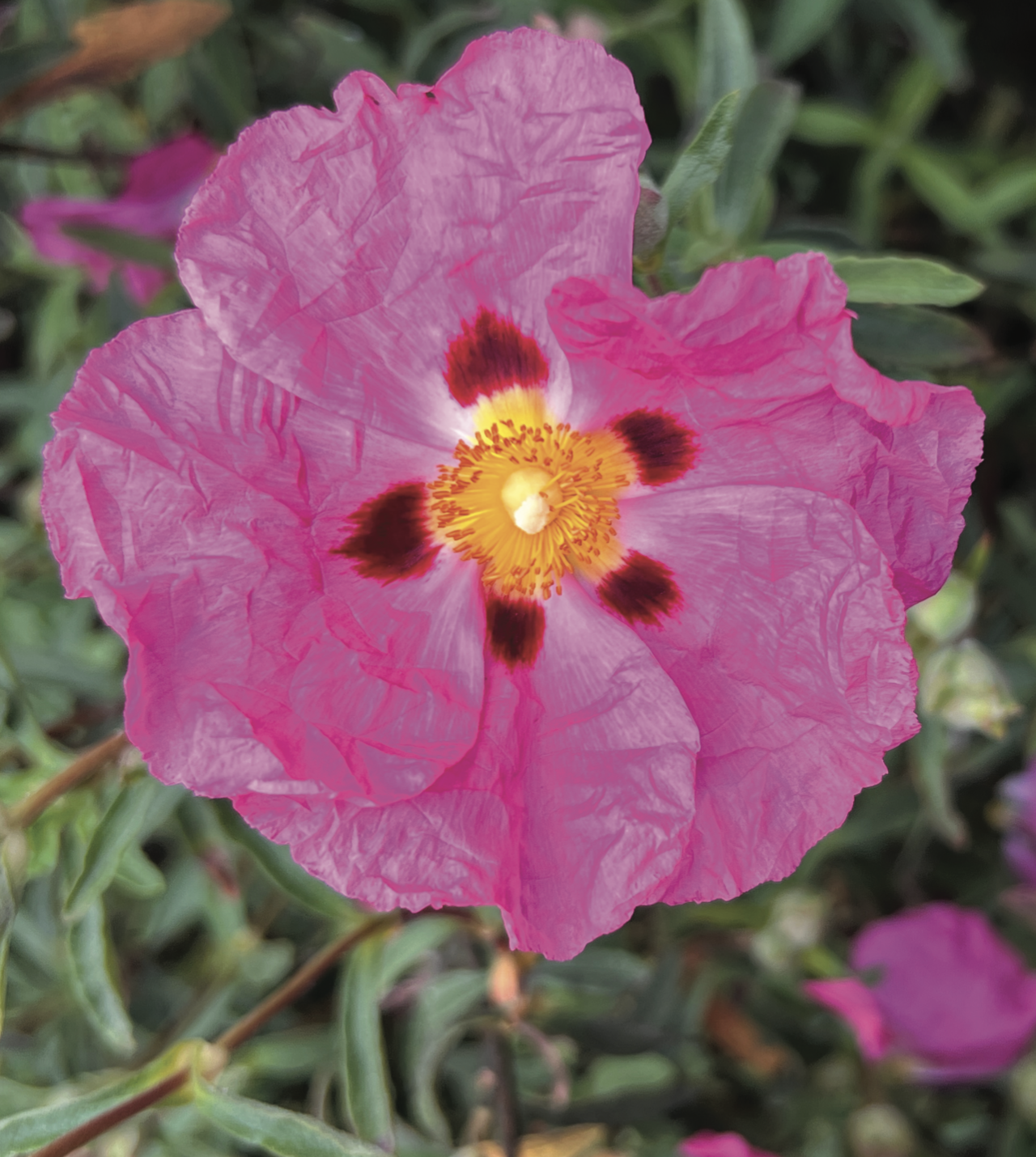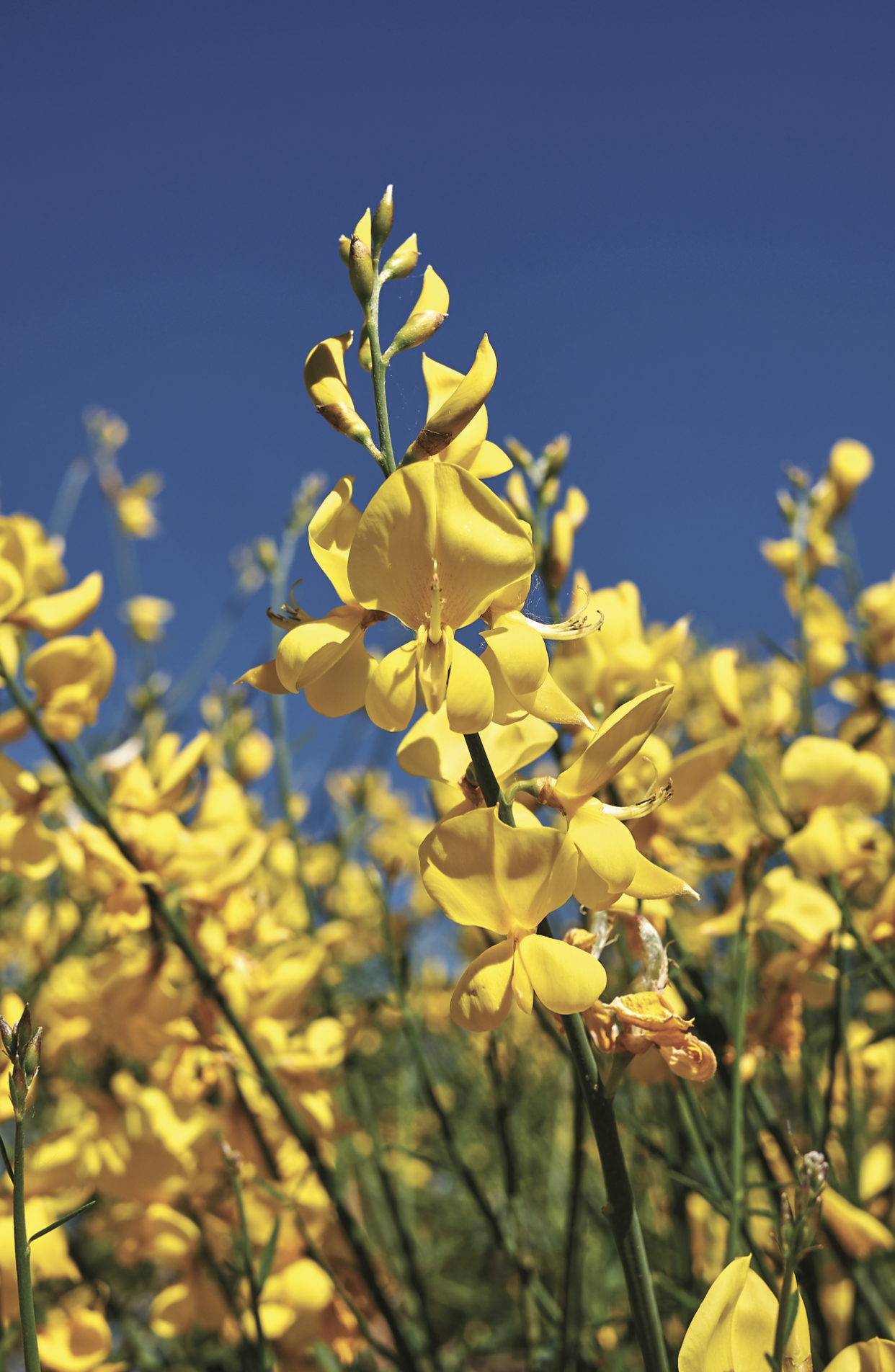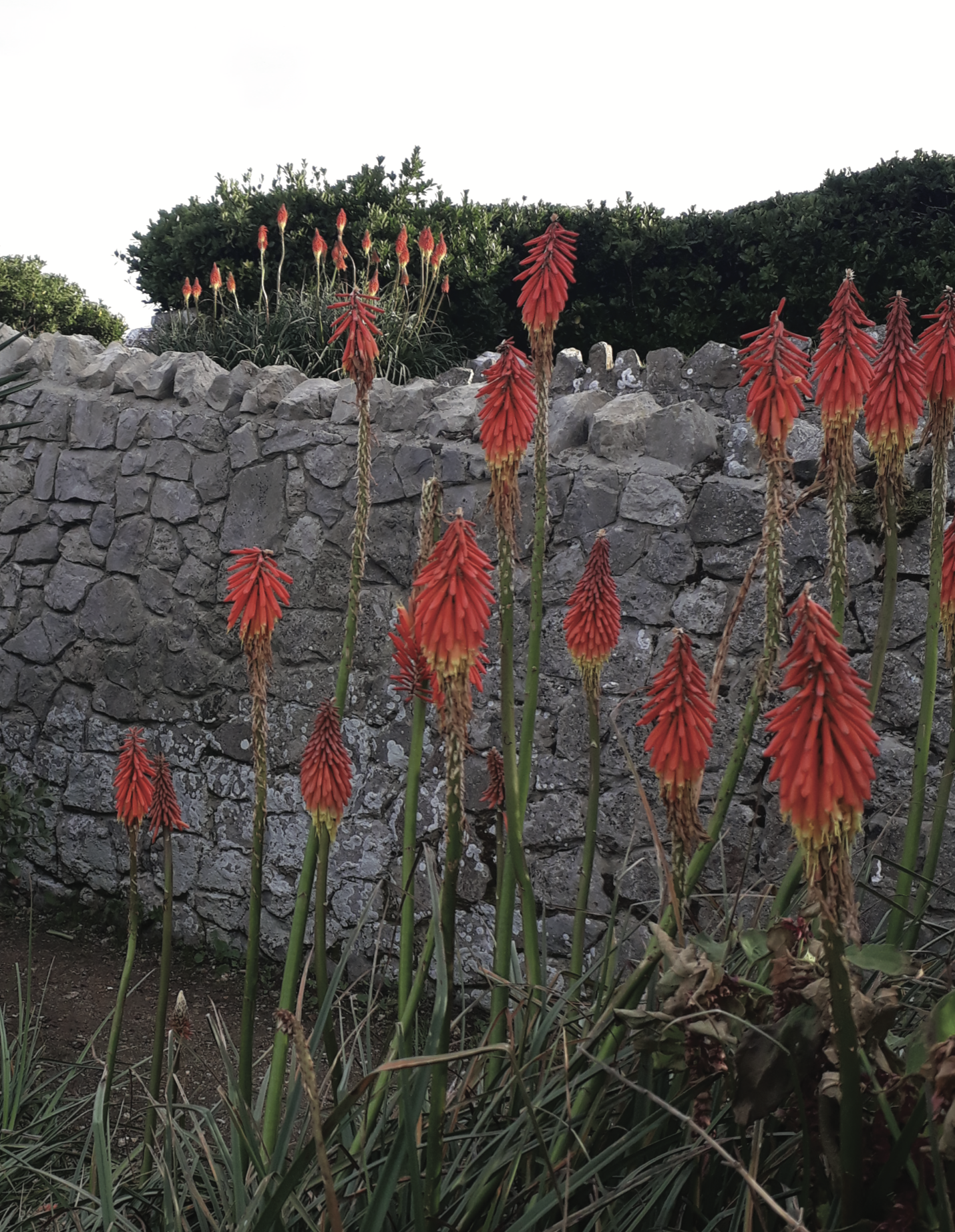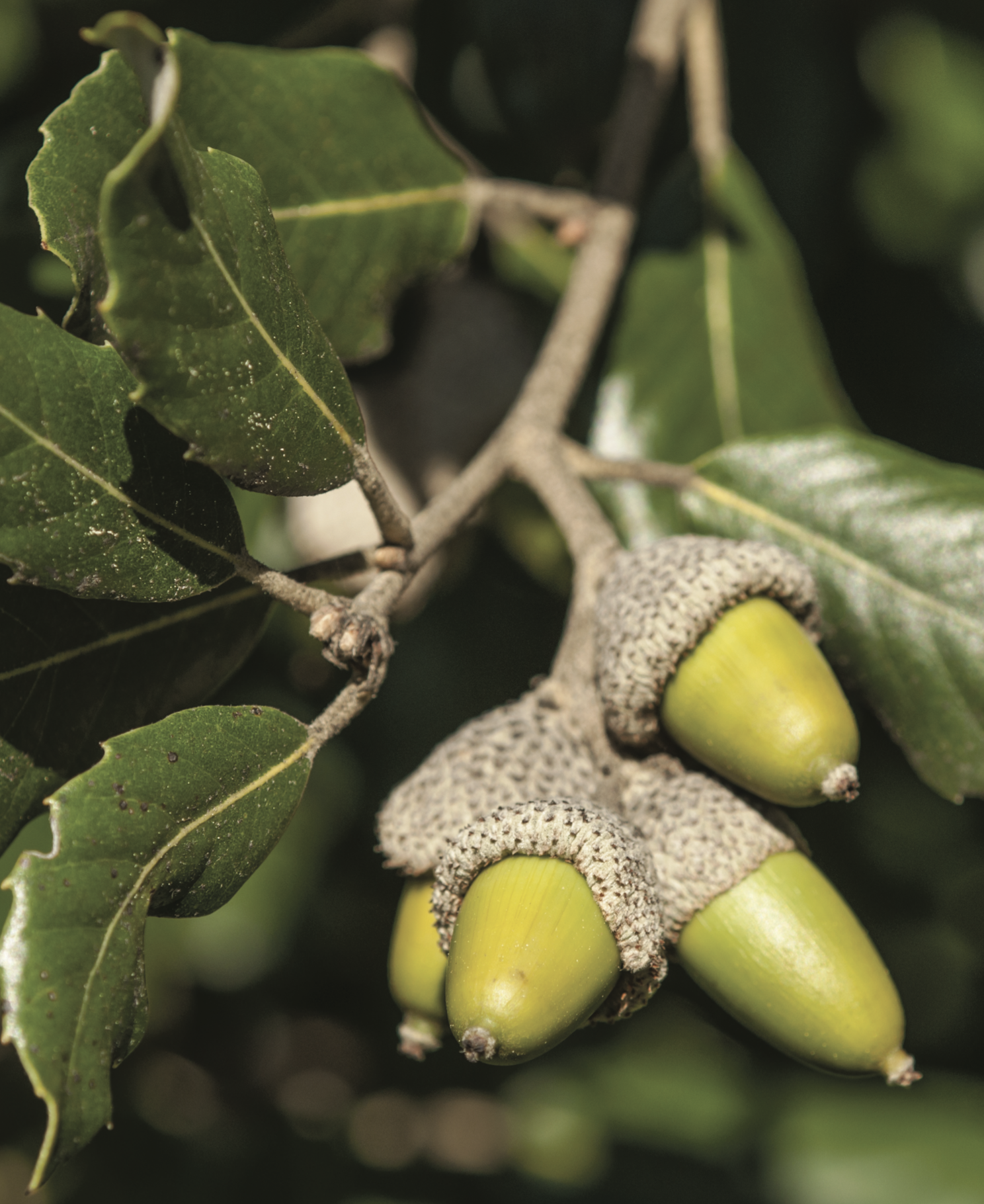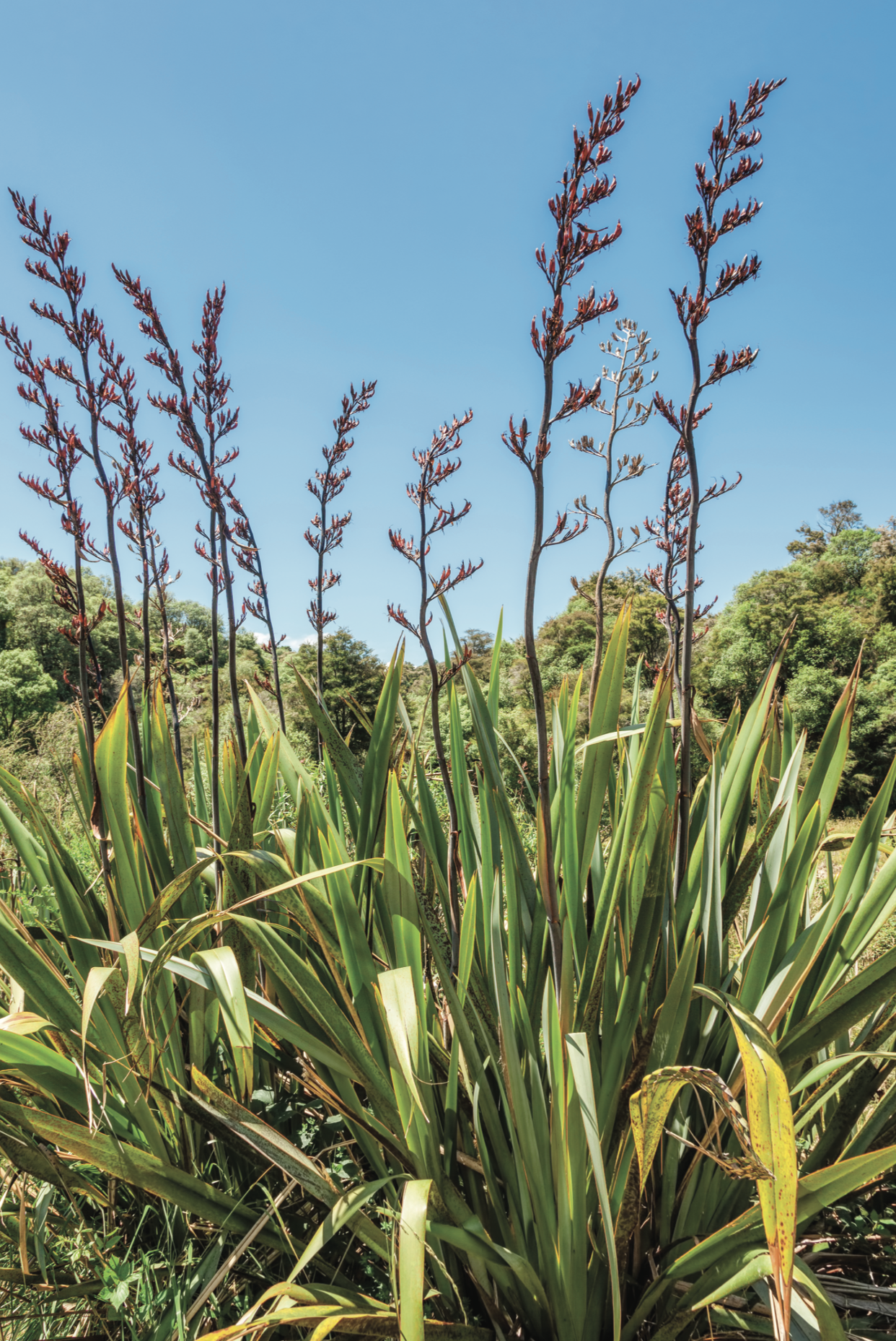Echium
(Echium spp.)
Echiums are known for their striking flower spikes and are native to the Mediterranean, Canary Islands, and North Africa. The name “Echium” is derived from the ancient Greek “echis,” meaning “viper,” due to the belief that the plant could cure snakebites. Echiums are valued for their ability to attract bees.
New Zealand Flax
(Phormium tenax)
New Zealand Flax has eye-catching foliage and a rich history of cultural significance. Known as “harakeke”, in Māori culture, it holds immense significance. It has been used traditionally for weaving, baskets, mats, and clothing.
Evergreen / Holm Oak
(Quercus ilex)
The Holm oak flushes and sheds its evergreen foliage twice a year. Also known as the holly leaved oak, they hold cultural significance, deeply intertwined with Mediterranean history, and can live for over one thousand years.
Austrian Pine
(Pinus nigra ‘Austriaca’)
The Austrian Pine, a robust evergreen well-suited for challenging dry and exposed environmental conditions, was introduced to the UK during the mid-1830s. The black pine thrives in many different types of soil, including chalk.
Redclaws
(Escallonia rubra)
Escallonia is an evergreen hedging plant, providing the perfect background for red summer flowers. Native to Chile, this wonderful evergreen shrub offers great protection as a windbreak.
Red Hot Poker
(Kniphofia uvaria)
Native to Africa, Kniphofia produces tall, upright red, orange, or yellow “poker” spikes. They thrive in well-drained soil and prefer full sun but can tolerate partial shade and grow really well in the garden.
Rock Rose
(Cistus × purpureus)
Cistus originates from dry, rocky parts of the Mediterranean and Canary Islands, making them drought-tolerant and low maintenance. They produce masses of flowers in midsummer, each lasting one day throughout June. Many Cistus have been planted as part of the revival.
Sea Holly
(Eryngium bourgatii)
Sea Holly has a distinctive thistle-like appearance and is known for its coastal resilience. Its spiky flowers and striking blue foliage are very attractive to pollinators, making them a good choice for the garden.
Silverberry
(Eleaugnus x ebbingei)
Silverberry is a versatile evergreen shrub known for its striking silver-gray foliage, salt and wind tolerance, and low maintenance requirements. It is a valuable addition to any coastal region. The small autumn flowers have a strong sweet scent.
Spanish Broom
(Spartium Junceum)
A Mediterranean plant recognized for its vibrant, fragrant flowers, feathery foliage, and adaptability to thrive in coastal conditions. The bright yellow flowers have a sweet, honey-like scent, and are rich in nectar, making them attractive to bees and butterflies.
Tamarisk
(Tamarisk spp.)
Within the garden, grow subspecies of Tamarisk from Eurasia and Africa, known for their delicate feathery foliage, attractive pink flowers, and adaptability to thrive in these coastal conditions. Tamarisk is used in many African cultures for a range of medical complaints.
Tree Mallow
(Lavatera maritima)
Tree Mallow is often found in coastal areas of Europe and North Africa. The plant’s nectar-rich flowers attract many pollinators. Various parts of the plant are used in traditional herbal medicine for their soothing properties.
Yucca
(Yucca filamentosa)
An adaptable plant with striking foliage and impressive flowering stalks. Its thick undergrowth makes it an ideal sanctuary for many small birds. Native American tribes utilized Yuccas for various purposes, fibers for cordage, basketry, and as a food source.








